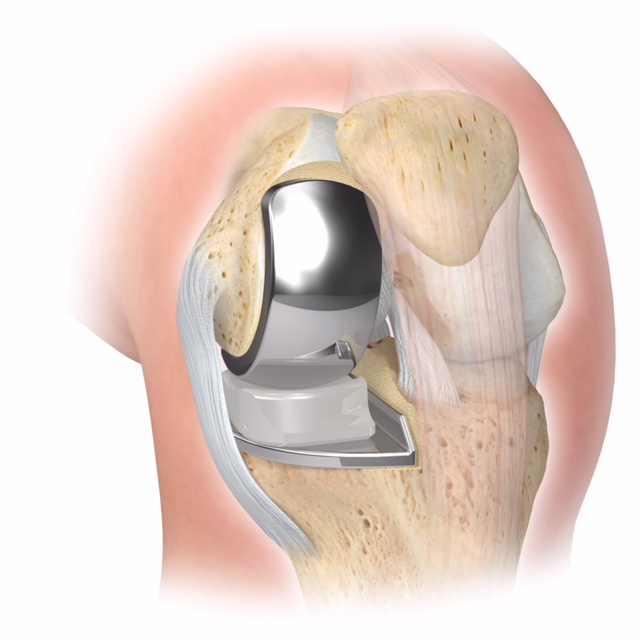Partial Knee Replacement Specialists
Your Premier Destination for Partial Knee Replacement in Indiana
Hip and Knee Replacement Surgeons located in Indianapolis, IN & Bloomington, IN

Partial Knee Replacement Q&A
What is a partial knee replacement?
Your knee is divided into three compartments, including:
- Medial compartment (inside of the knee)
- Lateral compartment (outside of the knee)
- Patellofemoral compartment (area between kneecap and thighbone)
During a partial knee replacement, your surgeon removes and replaces only the damaged compartment, while maintaining the integrity of the healthy compartments. This procedure allows for a faster recovery and fewer risks of complications:
Am I a good candidate for partial knee replacement?
Your surgeon determines if you’re a good candidate for a partial knee replacement during your consultation.
If the cartilage damage in your knee has occurred in only one compartment, you may be a good candidate for a partial knee replacement.
What happens during partial knee replacement?
Our surgeons use the least invasive techniques and specialized instruments to perform partial knee replacements.
During the procedure, your surgeon first removes the damaged cartilage and bone from the compartment and replaces the parts with prosthetic implants. Your surgeon inserts a spacer between the implants that allows them to glide smoothly during movement.
How do I prepare for partial knee replacement?
Our team will work with you closely to ensure you are completely prepared on the day of your surgery, from getting pre-operative prescriptions to preparing your home to planning your recovery. You will have a pre-operative appointment at the office or the hospital to learn about exercises, medications, and surgery instructions.
In addition to making sure you’re healthy enough for surgery, the goal of the pre-operative exam is to provide you with pre-surgical guidelines and therapies that minimize post-surgical pain and optimize recovery.
How long is recovery from partial knee replacement?
Recovery from a partial knee replacement varies. But it may take up to 4-6 weeks until you’re able to resume most of your usual activities.
To learn more about partial knee replacement and whether it’s an option for you, call 317-455-1064 to book an appointment.
Specialties
Total Knee Replacement
Total knee replacement, or total knee arthroplasty, is a surgical procedure that replaces the damaged components of your knee with artificial implants.
Learn MorePartial Knee Replacement
During a partial knee replacement, your surgeon removes and replaces only the damaged compartments in your knee.
Learn MoreAnterior Hip Replacement
During your hip replacement surgery, your surgeon replaces the damaged ends of your hip bones, both in the femur and pelvis.
Learn MoreOutpatient Joint Replacement
Thanks to modern anesthesia techniques and a multimodal approach to pain control, we can perform hip and knee replacements in the outpatient setting.
Learn MoreArthritis
If you have arthritis, the highly skilled team of orthopedic surgeons at Midwest Center for Joint Replacement can help.
Learn MoreKnee Pain
Our team treats numerous knee conditions through total and partial knee replacement surgery or nonsurgical treatments such as steroid injections.
Learn MoreHip Pain
If hip pain is disrupting your life, our board-certified team of orthopedic surgeons at Midwest Center for Joint Replacement can help.
Learn MoreInjections
If you're experiencing joint pain that isn't improving with conservative treatment, steroid injections could help.
Learn More